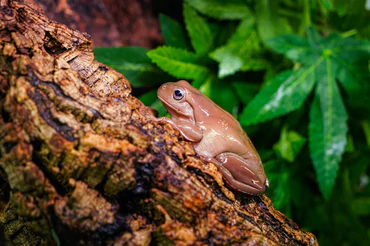At Repti-Zoo, we understand the importance of creating a suitable and enriching habitat for king snakes, captivating reptiles known for their vibrant colors and fascinating behaviors. In this comprehensive guide, we'll explore the essential elements to consider when designing the ideal king snake enclosure to ensure their well-being and happiness in captivity.
Understanding King Snake Natural Habitat
1. Varied Environments
King snakes inhabit diverse environments, ranging from woodlands and grasslands to deserts and scrublands. Replicating these varied environments in captivity is crucial for meeting their specific needs.
2. Ground-Dwelling Habits
King snakes are predominantly ground-dwellers, utilizing leaf litter, burrows, and other hiding spots in the wild. Providing opportunities for burrowing and hiding is essential for their mental well-being.
3. Temperature Preferences
Maintaining proper temperature gradients is vital. King snakes require a basking spot with temperatures ranging from 85 to 90 degrees Fahrenheit, complemented by a cooler side around 75 to 80 degrees Fahrenheit.
Designing the Perfect King Snake Enclosure
1. Enclosure Size
Select an enclosure that allows ample space for your king snake to explore and move comfortably. A 20 to 30-gallon tank is suitable for adult king snakes, but larger sizes are advisable for more active individuals.
2. Substrate Choices
Choose a substrate that mimics the natural environment of king snakes. Cypress mulch, aspen shavings, or a combination of both can provide a comfortable and natural substrate that allows burrowing.
3. Hiding Places
Incorporate multiple hiding spots within the enclosure. King snakes thrive when provided with secure hiding spots on both the warm and cool sides, allowing them to choose based on their thermoregulation needs.
4. Climbing Opportunities
While predominantly ground-dwelling, king snakes may appreciate climbing opportunities. Introduce branches or low-level platforms to enrich their environment and provide additional points of exploration.
Feeding and Hydration
1. Water Dish
Provide a shallow water dish for your king snake to drink and soak. Ensure it is easily accessible and cleaned regularly to maintain optimal hygiene.
2. Appropriate Diet
King snakes are constrictors and feed on a diet of appropriately sized rodents. Offer a varied diet and adhere to a feeding schedule that aligns with their natural behavior, typically once every 7-10 days.
Maintenance and Monitoring
1. Regular Cleaning
Maintain a clean enclosure by regularly removing waste and soiled substrate. Spot clean as needed, and conduct a thorough cleaning at least once a month to prevent the buildup of bacteria.
2. Health Monitoring
Regularly observe your king snake for any signs of illness or stress. Changes in behavior, appetite, or appearance may indicate health issues. Prompt veterinary attention is essential for the well-being of your snake.
Conclusion
In conclusion, designing a king snake enclosure that replicates their natural habitat is key to their overall well-being. By providing a setup that includes proper hiding places, varied substrates, and climbing opportunities, you create an environment where your king snake can thrive and express its natural behaviors.


